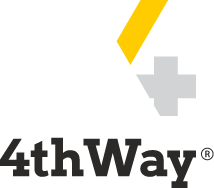Loanpad Review
Even in the worst possible economic and property-market conditions, Loanpad remains the place for your money during an Armageddon situation.

Loanpad's Premium Account/Premium IFISA received an Exceptional 3/3 4thWay PLUS Rating.
This account has been paying 6.0% interest with zero losses.
Visit Loanpad* or keep reading the Loanpad Review.
When did Loanpad start?
Established in 2018, lenders have lent around £400 million by the end of summer 2025.
It’s mostly lending to fund residential property developments as well as bridging loans, which means short-term property lending.
Its development lending currently is mostly refurbishment and conversion, rather than the riskier, ground-up builds, but I will refer to it all as “development lending”.
There are smaller numbers of loans against commercial or mixed-use properties.
What interesting or unique points does Loanpad have?
Lenders through Loanpad* buy the safest slice of these loans, so that the agreed loan amounts don’t go much above half the property valuation. Loanpad is also rare in development lending in that, more often than not, it bases the property valuation on its starting value rather than the hoped-for sale price after the developers have finished their work.
Partner lending companies keep the riskier part of every loan, taking the first loss above yours typically of the first 25% of losses or even a lot more. That’s massive. When other UK P2P lending companies arrange for first-loss protection for lenders, it’s usually just 5%.
With a perfect record of around 750 loans repaid in full, and with lenders’ money automatically spread across all existing loans, and regularly redistributed, the risks are better contained here than at any other P2P lending or IFISA provider.
Loanpad built an excellent reputation for continuing to be able to allow lenders to sell their loans and withdraw swiftly. It’s even better known for offering lenders the opportunity to easily lend either very large or very small sums of money – always spread across hundreds of loans.
Loanpad has a small, entirely discretionary fund to pay out interest to you on time in the event a borrower falls behind on payments. This is rarely touched. It’s for smoothing cash flow into your account, rather than serving any protective function.
How good are its loans?
You are the senior lender in all Loanpad loans, meaning that if a property needs to be repossessed and sold, and not all the borrower’s debt is recovered, there are other lenders elsewhere who will lose all their money first.
In that event, lenders using Loanpad will get all their money back, as well as all the interest due to you, before any other lenders receive a penny.
56% limit on the amount lent versus the property price
Loanpad* limits its loans to 56% of the property valuation, so the property needs to sell for far less than its valuation in order for you to lose any money. The historical average has been 48.7%.
This is startlingly good, with typical industry averages usually capped at 70% to 80% and averaging over 65%.
Property development lending
When the loan is on a property development, Loanpad initially caps the amount lent to 56% of the starting valuation of the undeveloped property. Developers receive their money in tranches as they successfully complete each phase. Lenders will still lend less than 56% of the valuation throughout.
Only once a development is over three-quarters complete does Loanpad relax that very high standard somewhat. Loanpad then caps the amount lent at 56% of the hoped-for sale price.
Development loans that have reached this stage currently average 31.6% of the hoped-for sale price, which is half as much (twice as good) as normal for these kinds of loans.
Plus, Loanpad overwhelmingly focuses on non-ground-up development lending, which takes a way some of the highest-risk phases, such as discovering problems as soon as you dig to create foundations.
Loan extensions are common
Scores of loans that historically have been extended for 20 months, 30 months or even longer have gone on to repay in full and few of them were officially considered bad debts. This is a statistically significant finding.
Historically, fully a third of outstanding loan tranches have needed to be extended and by an average of 14 months.
This is currently pretty normal in the wider market, as developers have had a variety of issues to face, but the difference here is that those other lenders are losing money as a result. Loanpad’s extensions will turn out to be safe and reasonable with few losses.
Monthly interest sometimes paid by borrowers
Sometimes, borrowers pay in the interest due on a monthly basis (and in advance), which is unusual for these kinds of loans – but welcome. However, we don’t currently get a break down of how many loans have monthly interest payments coming from borrowers, so for the time being we presume it’s on the rarer side.
How much experience do Loanpad’s key people have?
Loanpad’s key decision maker was a property lawyer who built up a lot of lending contacts, such as Loanpad’s initial partner firm. His property-law experience covers the whole range, which you don’t usually get in-house in P2P lending. One of Loanpad’s key tasks is ensuring that the loans are legally sound and that borrower fraud is very unlikely.
On lending experience, the key decision maker worked as CEO of a property lender for two years. This is less prior experience than I would usually want to see, but it is absolutely acceptable with these loans, where the experienced partner lenders take a large chunk of skin in the game along with the riskiest loan slices. He also now has seven years experience at Loanpad.
The core borrower assessments for Loanpad* are conducted by its many lending partner companies as well as by Loanpad itself.
Loanpad told us that all its partners have a lot of experience. It’s not possible to assess all of those firms in anything like the depth we regularly assess Loanpad. But the background research we have conducted has found that they all have at least some property or property-lending experience, and in some cases they clearly have a huge and successful history in this space.
While I’m not convinced that all of them are very experienced, I trust in Loanpad’s assessments of their abilities and integrity. These lending companies are taking far riskier slices of the same loans, as they will lose their money first.
Loanpad review: lending processes
Loanpad’s role is firstly to assess potential lending partners, as it will be taking the lowest-risk chunks of loans from them. The idea is that partner lenders will assess the borrowers, their properties and their development plans more carefully than a loan broker, due to their skin in the game.
In assessing loans, Loanpad* considers top-quality property security to be paramount. Loanpad emphasises getting loans on properties that will be easy to sell, such as two-bedroom flats in a town centre as opposed to farms.
Loanpad also only agrees loans on major developments when they come through lending partners that have the skills to complete the development project in the borrower’s place, should that become necessary.
Any checks on borrowers are focused on trustworthiness, with financial and credit checks being part of that, and on steps to make fraud unlikely.
How good are Loanpad’s interest rates, bad debts and margin of safety?
Just nine historical loans out of more than 1,000 have ever officially been classed as bad debts, five of which have been fully recovered.
Looking at the here and now, three out of 269 live development and bridging loan facilities are officially bad debts and 47 have been extended for a very long time.
In particular, the core of the most delayed loans were issued in 2022 and 2023. The extensions offered to these property developers superficially indicate the expected exit time to complete the development and sell the property has more than tripled, on average.
However, Loanpad has good reason: in most cases, Loanpad simply extends loans after developments are already completed and full of tenants, in order to give developers time to get a more ordinary commercial-property mortgage.
The overall picture of delays is therefore considerably on the better side in development lending today, which has seen a huge number of industry shocks that stretched property developers to the limit.
The state of Loanpad’s loans is well within all the past forecasts my colleagues and I have made for Loanpad, using standards global banks apply for the specific economic and development-industry situation that we are just coming through. Loanpad and its lenders are able to easily take it, even if it proves too much for other development lenders.
Our core, strict assessments of Loanpad’s loans continue to show it maintains the 3/3 Exceptional 4thWay PLUS Rating – our rating of its risk-reward balance. It also remains the only provider to have a 4thWay Risk Score as low (i.e. as good) as 3/10. For comparison, it can never reach 1/10, because that’s savings account/cash ISA risk.
Yet, unlike savings accounts, Loanpad still pays more than inflation virtually every year. It pays 5.0%-6.0%, depending on how quickly you’d like access to your money.
In the worst possible economic and property-market conditions, Loanpad remains the place for your money during an Armageddon situation.
Currently, the Loanpad Premium P2P Lending Account* and the Loanpad Premium IFISA* offer you 6.0%.
Personally, I don’t see why anyone would choose the Loanpad Classic Account over Loanpad Premium, as it means earning 5.0% but without lower risk. And I don’t think you should lend in P2P if you feel you should always be able to access your money in an instant for free. (Which simply won’t always be the case.) That’s the only potential advantage that Loanpad Classic might offer you.
Has Loanpad provided enough information to assess the risks?
Loanpad* continues to be exceptionally open with us, providing the great volume of data, facts and personal access we need to assess it on an ongoing basis and to keep the Loanpad review up-to-date.
Is Loanpad profitable?
Loanpad told us it became profitable four years ago and that it expects to be profitable every month from now on.
Published company accounts don’t provide much information, although this is not unusual. Still, they indicate six-figure profits for the calendar years 2022, 2023 and 2024 and perhaps close to £1 million in that latest year.
It has a super solid core of loyal lenders. I therefore still expect this to be a sustainable business from this point onwards, as it should find it easy to maintain and grow its borrower and lender base, and to contain costs.
Is Loanpad a good investment?
Loanpad* is one of the safest investments of any asset class available to lenders in the UK.
I believe lenders are unlikely to lose money from bad debts under any imaginable market conditions, with the possible exception of catastrophes along the lines of a world war.
Loanpad offers a phenomenal investment opportunity that should be one of the core investment products for any investor looking for solid returns. Just watch that you’re comfortable with the rates versus cash ISAs and savings accounts, as they can sometimes get fairly close.
What is Loanpad’s minimum lending amount and how many loans can I lend in?
The minimum lending amount is just £0.01, which is spread across all live loans and redistributed daily as new loans are made. Lenders are sufficiently diversified across enough loans immediately.
There are enough loans available in the pipeline to keep lenders’ money spread widely.
Unusually, Loanpad lists maximum lending amounts. £20,000 in its Classic Account/IFISA and £250,000 in its Premium Account/IFISA. That said, it has a history of making arrangements for lenders if you write to them to ask to lend more.
We have investigated the potential capacity available to Loanpad and it remains huge. Even if you have large amounts of money that you want to lend, Loanpad is likely to be able to help you lend all of it across hundreds of high-quality loans for some time to come.
Does Loanpad have an IFISA?
Loanpad’s lending accounts are available as IFISAs.
Can I sell Loanpad loans to exit early?
Yes. There’s no charge for selling in its Classic accounts. With its Premium accounts you either have to wait at least 60 days or you pay 0.5%.
While lenders have always been able to sell swiftly so far since Loanpad launched, as usual you should expect that sometimes you won’t be able to do so and that it might even take quite a long time to get all your money back.
Be emotionally prepared for that, because that is normal for all P2P lending – even the best providers – and it’s one of the prices of investing in something that is highly stable compared to most other investments.
Thank you for reading the Loanpad review!
Independent opinion: 4thWay will help you to identify your options and narrow down your choices. We suggest what you could do, but we won't tell you what to do or where to lend; the decision is yours. We are responsible for the accuracy and quality of the information we provide, but not for any decision you make based on it. The material is for general information and education purposes only.
We are not financial, legal or tax advisors, which means that we don't offer advice or recommendations based on your circumstances and goals.
The opinions expressed are those of the author(s) and not held by 4thWay. 4thWay is not regulated by ESMA or the FCA. All the specialists and researchers who conduct research and write articles for 4thWay are subject to 4thWay's Editorial Code of Practice. For more, please see 4thWay's terms and conditions.
The 4thWay® PLUS Ratings are calculations developed by professional risk modellers (someone who models risks for the banks), experienced investors and a debt specialist from one of the major consultancy firms. They measure the interest you earn against the risk of suffering losses from borrowers being unable to repay their loans in scenarios up to a serious recession and a major property crash. The ratings assume you spread your money across hundreds or thousands of loans, and continue lending until all your loans are repaid. They assume you lend across 6-12 rated P2P lending accounts or IFISAs, and measure your overall performance across all of them, not against individual performances.
The 4thWay PLUS Ratings are calculated using objective criteria that can be measured and improved on over time, although no rating system is perfect. Read more about the 4thWay® PLUS Ratings.
*Commission, fees and impartial research: our service is free to you. 4thWay shows dozens of P2P lending accounts in our accurate comparison tables and we add new ones as they make it through our listing process. We receive compensation from Loanpad and other P2P lending companies not mentioned above either when you click through from our website and open accounts with them, or to cover the costs of conducting our calculated stress tests and ratings assessments. We vigorously ensure that this doesn't affect our editorial independence. Read How we earn money fairly with your help.



